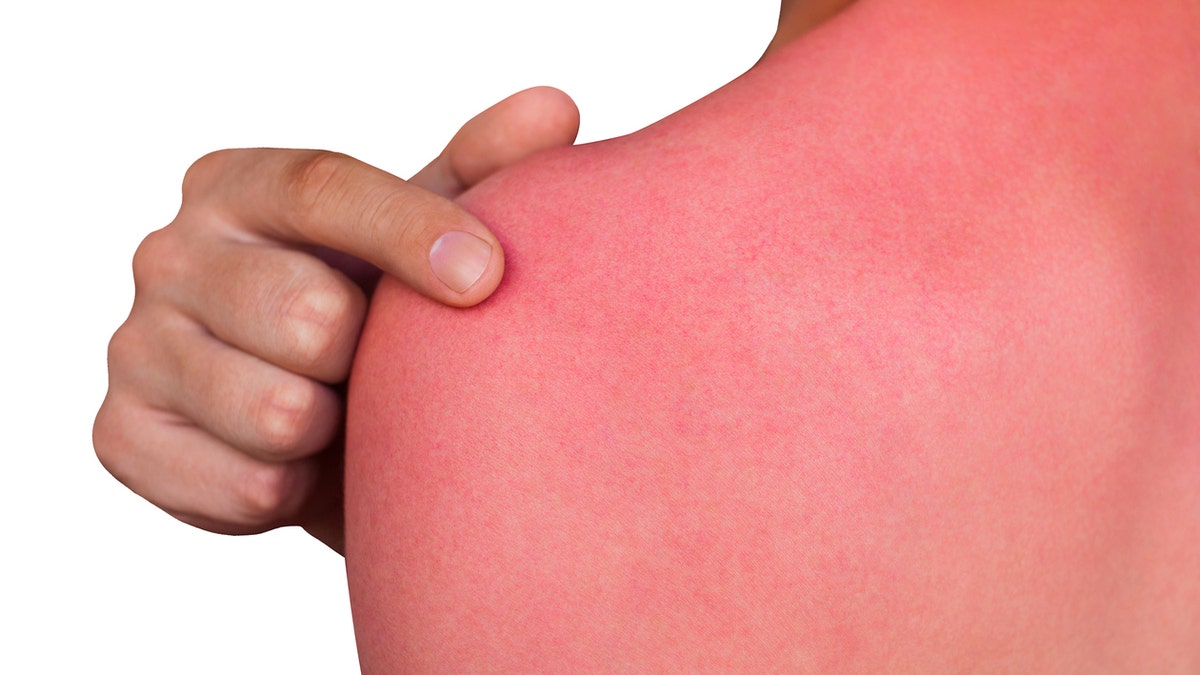
We’re at risk for sunburn and skin damage anytime the UV index is moderate to high. (iStock)
Sunscreen makes me think of beach vacations and all-day summer picnics. It’s easy to forget that where most people live, the summer sun can be just as dangerous in our own backyards or gardens. We’re at risk for sunburn and skin damage anytime the UV index is moderate to high. And you can’t always just look out the window to gauge your risk– as I write this on a cloudy, drizzly summer day, the UV index for my area is moderate (4), and the EPA recommends sunscreen and sunglasses. Throughout much of the US, sun damage is a risk almost year-round.
PREDICTING AGE PROGRESSION: A SCIENCE OR NOT?
Most of us don’t wear sunscreen as often as we should, and when we do, we don’t always apply it well enough or often enough to completely protect us from sunburn. Studies show that at least a third of us get at least one sunburn a year. Most of these are first-degree burns, only affecting the outermost layer of skin, and though they’re painful, they can be treated at home with over-the-counter products like aloe vera.
But sometimes, either because of a long period of unprotected high UV exposure or days of moderate UV exposure, sun burns can be more serious. A UK gardener recently made news with extensive second-degree burns on his shoulders and neck. He says that the sun didn’t seem particularly intense, but he was outside all day two sunny days in a row without sunscreen.
In 2013, the latest year for which data was evaluated, there were an estimated 33, 826 ER visits for sunburn in the U.S. Many people don’t realize it’s possible to get a second-degree burn from the sun until it happens to them. Second-degree burns injure the first and second layers of skin, causing blistering and swelling of the burned area. The first layer of skin eventually peels off, leaving a pale or pink area of unpigmented skin. The skin may take a year or longer to regain its normal pigment.
5 WAYS YOU CAN RELIEVE PERIOD CRAMPS NATURALLY
Always check with your doctor if you’re concerned about a sunburn, but most second-degree sunburns can be treated at home. If you’re able to get under a cool shower shortly after you notice the burn, try running cool water over the area for 15-30 minutes. Anytime you burn yourself, damage to the skin can continue even after you’ve removed the heat source, especially when the burn is deep. By lowering your skin temperature, you can sometimes prevent further damage. (Ice or ice water isn’t recommended because it can cause its own skin damage.)
Second-degree burns have a higher risk of infection, and you should always wash your hands before cleaning the burn or applying anything to the area. As you gently wash the area, you may notice some skin coming off with gentle pressure, but try to avoid breaking open any blisters. Dry the area with a clean cloth or sterile gauze. You can use over-the-counter pain relievers like ibuprofen to help with pain, which can be severe.
SINISTER 'BLUE WHALE CHALLENGE' BLAMED FOR TEEN'S DEATH
If you have large blisters, you may have a more severe second-degree burn and should contact your doctor. You should also call your doctor if you have blisters over a very large area, increased pain, lack of improvement with home treatment, new symptoms, or significant scarring. Your doctor may prescribe a mild steroid cream to help with swelling and speed healing or an antibiotic if they suspect infection.
Always wear sunscreen when you’re planning on spending time outdoors in the summer, even if you’re wearing long clothing or in the shade. The best treatment for sunburn is prevention – each sunburn increases your risk of skin cancer and ages your skin.
